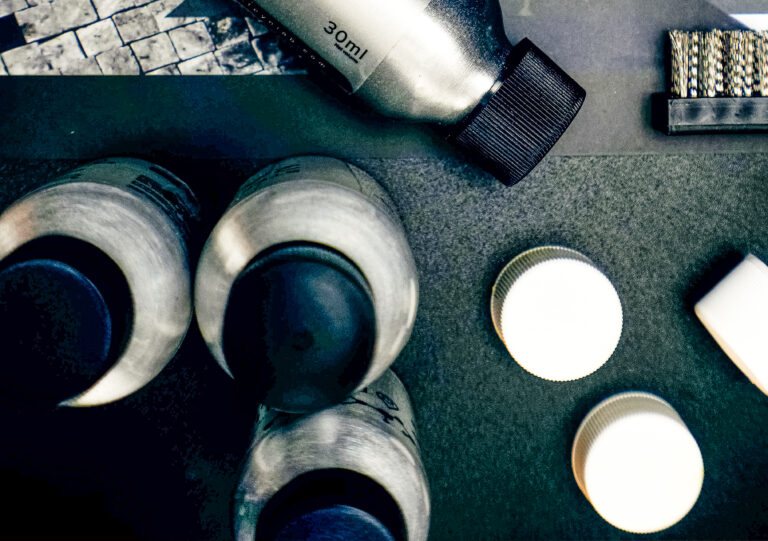PPF vs Ceramic Coatings: A Guide to Unrivalled Vehicle Protection
Your vehicle is more than just a mode of transportation—it’s an investment, an expression of style, and often a source of pride. Protecting its paint job is crucial for maintaining its value and aesthetic appeal. Two of the most effective solutions for safeguarding your car’s finish are Paint Protection Film (PPF) and Ceramic Coatings. Both methods offer unique benefits, and understanding their key differences can help you choose the ideal option—or even consider combining them for unmatched protection.
The Key Players in Paint Protection
- Material Composition
- PPF: A robust, transparent urethane film that physically adheres to the vehicle’s surface, offering a nearly invisible shield.
- Ceramic Coatings: A liquid polymer applied directly to the paint, chemically bonding to form a protective topcoat.
- Protection Mechanisms
- PPF: Acts as a physical barrier against scratches, chips, and abrasions, even absorbing impacts from minor debris.
- Ceramic Coatings: Delivers a chemical shield, creating a hydrophobic surface that repels water, dirt, and contaminants for a cleaner, glossier appearance.
- Durability
- PPF: Engineered for long-term resilience, typically lasting 5-10 years or more with proper care.
- Ceramic Coatings: Offers lasting benefits but usually requires periodic reapplication every 1-2 years to maintain peak performance.
- Aesthetic Appeal
- PPF: Seamlessly preserves your vehicle’s original paintwork, maintaining a factory-fresh appearance.
- Ceramic Coatings: Amplifies your vehicle’s visual appeal, delivering a deep, mirror-like gloss that turns heads wherever you go.
- Cost Considerations
- PPF: Represents a higher upfront investment due to its premium materials and precise installation process.
- Ceramic Coatings: More affordable, particularly for smaller vehicles or owners seeking an initial enhancement in appearance.
The Synergy of PPF and Ceramic Coating
Why choose between protection and beauty when you can have both? Combining PPF and Ceramic Coatings creates a dynamic duo that delivers maximum protection and stunning aesthetics:
- PPF: Serves as the ultimate defense, absorbing impacts and shielding your vehicle from scratches and chips.
- Ceramic Coatings: Elevates the paint’s vibrancy, enhances hydrophobicity, and simplifies maintenance.
This powerful combination ensures your vehicle remains pristine, glossy, and easy to care for, even under the toughest conditions.
Making the Right Decision
Selecting between PPF, ceramic coatings, or a combination of both depends on your priorities, lifestyle, and budget. Here’s how to decide:
- Level of Protection: Opt for PPF if you want the strongest defense against scratches, rock chips, and abrasions.
- Desired Aesthetics: Choose ceramic coating to achieve a showroom-quality gloss and effortless water repellency.
- Maintenance: PPF offers low-maintenance longevity, while ceramic coating may require periodic reapplication for sustained performance.
- Budget: While PPF requires a larger investment, its durability can outweigh the cost over time. Ceramic coating, being more budget-friendly, is ideal for enhancing appearance with moderate protection.
Conclusion: Invest in Long-Lasting Excellence
Whether you choose PPF, ceramic coatings, or the unbeatable combination of both, you’re making a smart investment in your vehicle’s future. By weighing your needs for protection, appearance, and maintenance, you can ensure your car remains a symbol of excellence for years to come. Drive with confidence, knowing your vehicle is protected by cutting-edge technology and expert care.

Trustindex verifies that the original source of the review is Google. I now have joined the list of my friends who have used Fabian. We are all delighted with his perfectionism. I highly recommend you join the list!Posted onTrustindex verifies that the original source of the review is Google. Amazing work. I have 2 show cars and i am very picky. Fabion is easy to work with, has great eye for detail and knows his stuff. Clean and tidy shop, very organized. I ended up doing the full monty on my 4runner. Ppe, ceramic coating, tint and windsheild protection. No issues what so ever. I am now a customer for life. Great job Fabion!!Posted onTrustindex verifies that the original source of the review is Google. Absolutely thrilled with my experience with Fabian at Evelyn Protective Films & Coatings—again! This is my second time trusting him with my vehicles, first with my Model Y in 2021 and now with my Model X in 2025. Fabian is incredibly responsive, professional, and takes genuine pride in his work. His attention to detail is second to none, and you can tell he treats every car like it’s his own. The quality of the tinting is flawless, and I wouldn’t go anywhere else. Highly recommend—Fabian has definitely earned my trust.Posted onTrustindex verifies that the original source of the review is Google. Amazing to deal with, very professional and courteous and spectacular work, will be going back for surePosted onTrustindex verifies that the original source of the review is Google. 5 Stars – Absolutely Blown Away! I brought my wife’s car to Fabian after BMW completely botched the PPF job, and I’m honestly insanely impressed with how he turned everything around. From the moment I dropped off the car, Fabian provided top-notch customer service — super professional, detail-oriented, and communicative throughout the entire process. He sent me pictures and updates regularly, which gave me total peace of mind. You can tell he takes real pride in his work, and it shows in the final result. The car looks absolutely flawless now — better than it ever did from the dealership! If you need PPF done right — or redone like I did — don’t hesitate to go with Fabian. Highly, highly recommend! I will definitely be bringing all my vehicles to Fabian from here on out.Posted onTrustindex verifies that the original source of the review is Google. Meticulous, just what I wanted. He did a perfect job on my Tesla 3: PPF wrap, ceramic polish, and detailing. Fabian is a pleasure to deal with, straightforward and at the top of his craft.Posted onTrustindex verifies that the original source of the review is Google. Got my tint done as well as a detail. I didn't want to leave a review until I actually tested the tint in the real world. Today was a real test driving facing west with the sun in my eyes was proof enough that quality materials were used, I don't have any seams and I can see, and the overall experience was done by someone that loves his craft. I'm going back to get my paint protection done by Fabian in the spring. I will update this review then but for now, 5 stars!Posted onTrustindex verifies that the original source of the review is Google. I must say Fabian workmanship is Phenomenal, he is a perfectionist , and his truthful and honest opinions. I must say i definitely recommended him. When i get the next vehicle, it is towed from the dealership to Fabian's shop. Thanks you again for your awesome services.Posted onTrustindex verifies that the original source of the review is Google. Had PPF installed on my brand new MX5. Fabian does an incredible job and his attention to detail was top tier. Everything was well laid out and Fabian was able to accommodate the additional areas I wanted done as well. Would recommend this place to anyone wanting PPF/ceramic coat done. Will definitely be coming back in the future with other vehicles!Posted on
